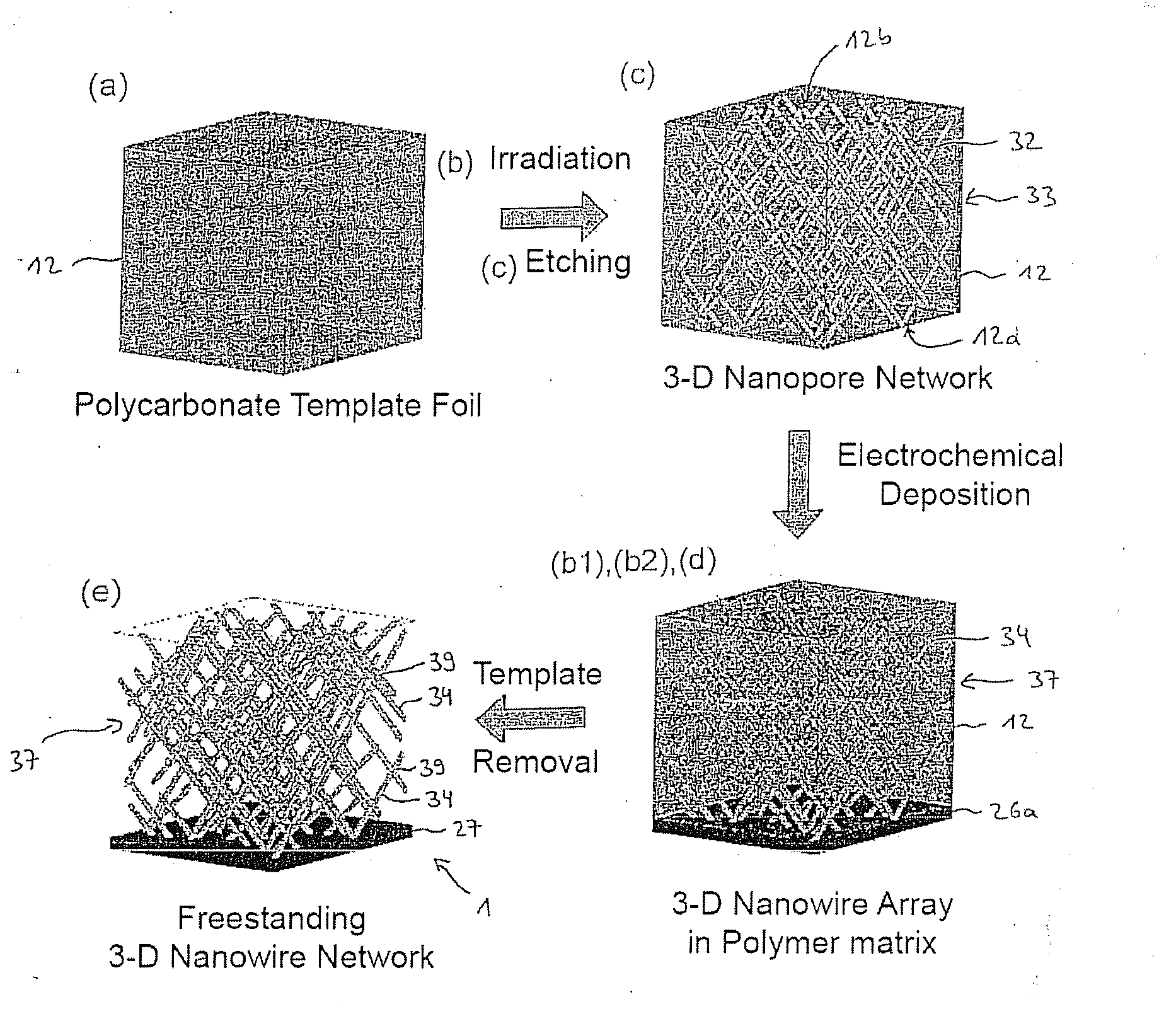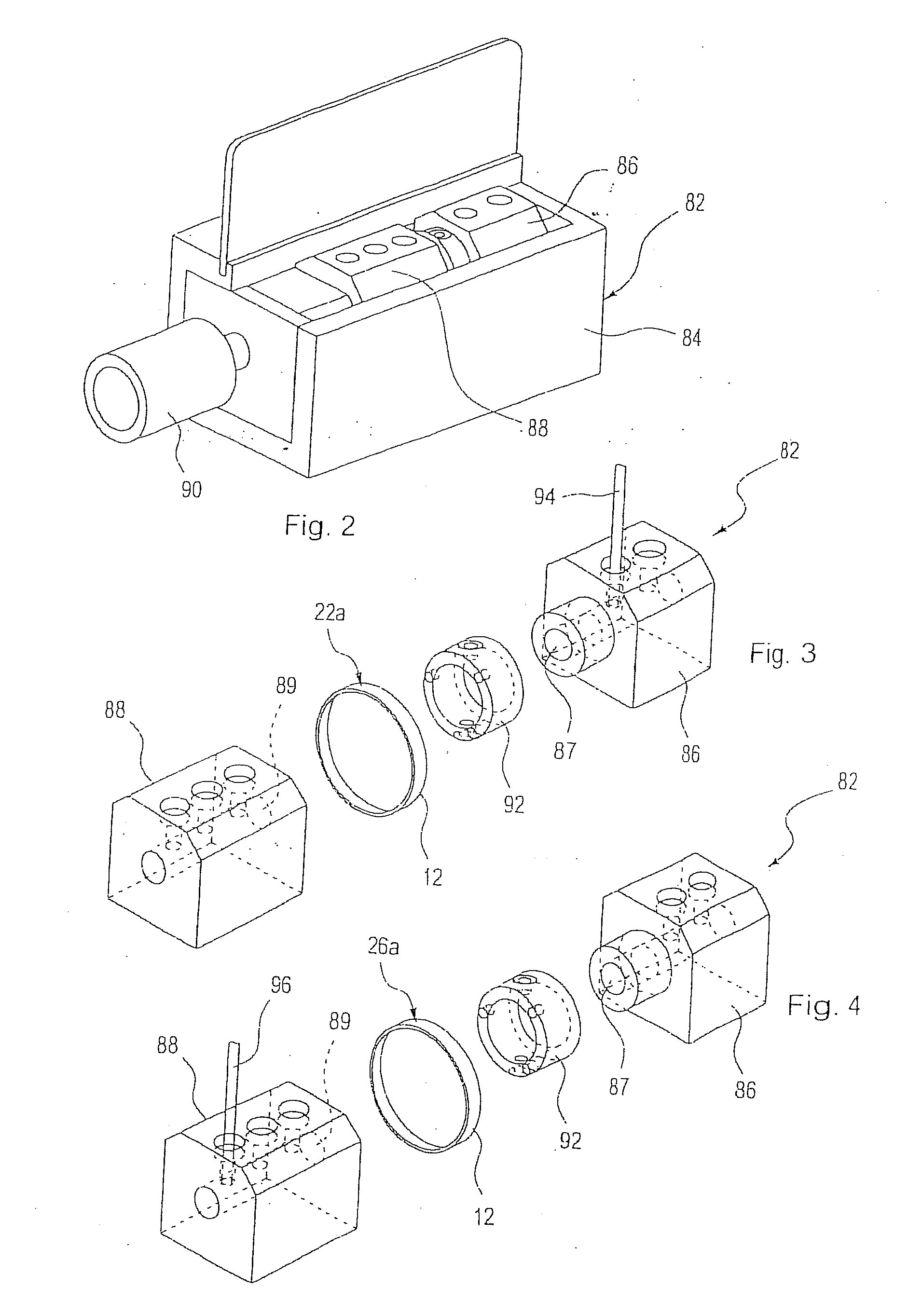Nanowire Structural Element
a technology of nanowires and structural elements, applied in the direction of raney catalysts, catalyst activation/preparation, metal/metal-oxide/metal-hydroxide catalysts, etc., can solve the problems of loss of contact between nanoparticles, major problems in the stabilization of these, limited catalyst surface to the walls of the reactor, etc., to ensure the stability of the network and high long-term stability
- Summary
- Abstract
- Description
- Claims
- Application Information
AI Technical Summary
Benefits of technology
Problems solved by technology
Method used
Image
Examples
example 1
[0082]For the production of a nanowire structural element 1, a 30 μm thick circular shaped (r=1.5 cm) polycarbonate foil 12 (Macrofol®) irradiated with heavy ions 14 having an energy of 11.1 MeV / u and at two angles (+45°, −45° each having a fluence of 5×108 ions / cm2 is used. Prior to the application of the conductive metallic layer 22a, each side of the polymer foil 12 is irradiated for one hour with UV light, in order to increase the selectivity of the etching along the tracks 16.
[0083]A gold layer 22a is sputtered onto the first side 12a of the polymer foil 12, having a thickness of ca. 30 nm (b1). This is reinforced by a potentiostatic deposition of copper from a CuSO4 based electrolyte solution (Cupatierbad, Riedel) with a voltage of U=−500 mV, wherein a copper rod electrode serves as the anode (partial step 24a) (b2). The deposition is stopped after 30 minutes, at which point the copper layer 24a is approx. 10 μm thick. Subsequently, etching is carried out from the untreated si...
example 2
[0088]In reference to FIGS. 7-10, a further embodiment is produced. FIG. 7 shows schematically, and partially summarized the following partial steps of the process:
(a) Preparation of the template foil,
(b), (c) Irradiation and etching of the ion tracks to form nanopores,
(b1), (b2), (d) Generation of a cathode layer and deposition of the nanowires in the nanopores,
(e) Dissolving and removal of the template foil.
[0089]With reference to FIG. 7, the template foil or polymer membrane 12 is irradiated from more than two different directions. The irradiation is carried out in this example from four different directions, wherein the four irradiation directions are not in the same plane. With reference to perspective view shown in FIG. 7, radiation is applied in each case once from each of the four sides diagonally from above, and this being at a polar angle of 45° to the surface of the substrate and at azimuth angles of 0°, 90° 180° and 270°. The template foil 12 is therefore rotated at leas...
PUM
| Property | Measurement | Unit |
|---|---|---|
| diameter | aaaaa | aaaaa |
| diameter | aaaaa | aaaaa |
| diameters | aaaaa | aaaaa |
Abstract
Description
Claims
Application Information
 Login to View More
Login to View More - R&D
- Intellectual Property
- Life Sciences
- Materials
- Tech Scout
- Unparalleled Data Quality
- Higher Quality Content
- 60% Fewer Hallucinations
Browse by: Latest US Patents, China's latest patents, Technical Efficacy Thesaurus, Application Domain, Technology Topic, Popular Technical Reports.
© 2025 PatSnap. All rights reserved.Legal|Privacy policy|Modern Slavery Act Transparency Statement|Sitemap|About US| Contact US: help@patsnap.com



